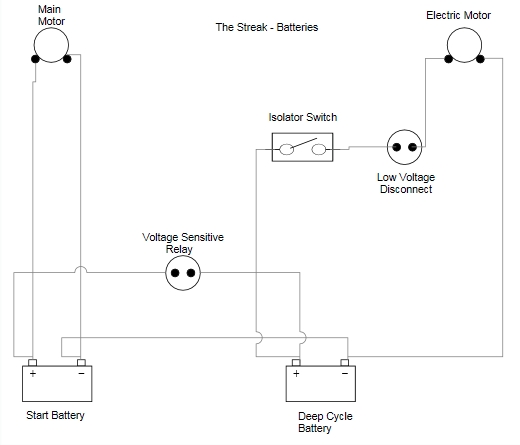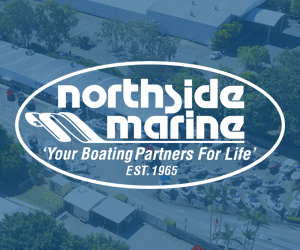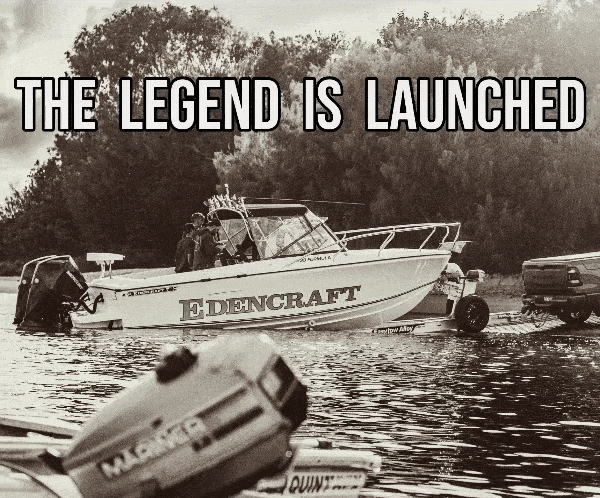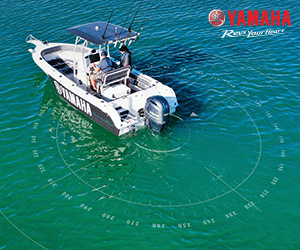Deep Cycle Battery Secrets – Graham Brake – 2016
Have you been guilty of running your electric motor until it stops? I know I have. Luckily in this age of modern, four-stroke outboards with high amperage charging capability, it’s normally a case of going for a decent run and you will have replenished your battery enough for another crack at your favourite snags. Unfortunately, this process is doing irreparable damage to your deep cycle battery.
Now I don’t want to waffle on about the mechanics of battery design and will only state the obvious that there are two entirely different types of batteries you can install in your boat. On the one hand, you have your good old start battery that is designed purely for short bursts of high current to get your motor cranking before it is topped up by your alternator. On the other hand, your deep cycle battery is designed to be slowly discharged at a lower amperage time and time again. Do this with your start battery and you will greatly diminish its life. But, and it’s a big but, if you also drain your deep cycle battery completely, you run the risk of damaging it irretrievably. The other thing to note is if you do this while the battery is under warranty and take it back to the place of purchase, the tests they perform on it will highlight that fact and your warranty could be null and void.
So what do we do? Probably the easiest way to prevent this is to stop using your electric motor as soon as you realise it is starting to become a little sluggish. Sounds easy, but we all know how hard this is to actually do when the whole creek bank is alive with boofs and boils and it becomes a case of “just one more snag”. Before you know it, you have passed that point of no return and damage has been done. This is not to say the battery will immediately fail. What it does do is greatly diminish the life of the battery. Most good battery manufacturers state that a deep cycle battery that is only discharged to 50% of capacity before recharging should be good for 1700 cycles or more. Start taking the battery down to 30% and you drop to 1200 cycles or less. If you’re running a top of the line AGM (absorbed glass mat) battery it will have cost you up to $500 for a 120AH model, so extending its life by 500 cycles is definitely worthwhile. Of course, the best way to ensure you aren’t flattening your battery continually is to ensure you have the amp-hour capacity for the type of fishing you regularly undertake. Contrary to other areas in life, this is one place where “bigger is better”! If you are someone who mostly anchors and only occasionally uses the electric to work a nice looking piece of creek bank, a 100AH battery will suffice. Someone like me who can’t remember the last time the anchor saw the sunlight needs 120AH or more to ensure I have the power for a full day of luring on the water. Fish a dam where petrol motors are a no-go, or use your spot-lock continuously in strong currents and you will have to go on a starvation diet and fit your boat with either a very large battery or multiple units connected in parallel.
I have just updated the deep cycle battery in The Streak in preparation for the onset of warmer water and some intense lure tossing sessions including our annual pilgrimage to Hinchinbrook. After enduring poor life out of cheaper batteries I have taken the plunge to go without food for a month to finance the purchase of a high end product. It was during the research of these products that the light bulb went on and I realised I was probably the main reason for the poor battery life to date. With so much hard-earned outlaid on the new model, I needed to ensure I did everything possible to guarantee the longest lifespan possible. Monitoring the voltage of the battery is one way of ensuring adequate charge. An AGM deep cycle battery will show greater than 12.8 volts when fully charged. Just remember to disconnect any charging equipment and letting the battery settle before measuring it with a multimeter. As the battery is used, the measured voltage will drop. At 70% it will be around 12.5 volts while at 50% it will be 12.2. At 12 volts you are at 25% charge and at the point you should limit taking load from it. Now, while this is a very accurate way to establish your battery state it is not really feasible during a day on the water. The digital volt meters on most of our boat electronics only monitor the start battery so unless you have the option of connecting and monitoring a second battery this is also not a viable option. These options also bring the human element into play and who in their right mind would leave a hot bite to keep an eye on a voltmeter.
So what to do to protect our expensive investment? The best option is go without food for another week and outlay still more money on a “low-voltage disconnect” relay. This devise is connected in series with the battery and the load (your electric motor) and will automatically cut out when the battery volts drop below a preset level (usually 11.5 volts). To stop it chattering on and off, it will not close again until the battery is charged above 12.5 volts – all automatic with nothing for you to do. So this is the path I have taken. There are several makes and models available with the only things to remember being to buy one that is fully sealed for marine use and also of a higher amperage than the load you will be supplying. My 55-pound motor draws 52 amps at full load so I have fitted an 80-amp unit. I now feel confident I have purchased quality gear and have done everything in my power to get the longest possible life from them. There is only one other piece of advice I can offer that I have learnt during my research and this is in relation to recharging your deep cycle battery.
With regards to battery chargers, try and use a charger that is at least 10% the capacity of your battery. That is, for a 120AH battery, have a charger that has a maximum output of at least 12 amps. If you are buying a charger you will be overwhelmed with choices, from simple devices that output a constant amperage, to multistage units that are also selectable between differing battery types. Where do you start? Let’s look at being able to select between battery types first. Most will offer the choice of batteries from Gel to lead-acid to AGM. Want to know a secret? The only difference is in the higher, “charged” voltage level. This will range from approximately 14 volts for Gel batteries to 14.8 volts for wet and AGM models. If you have a gel battery make sure you have the correct charger, otherwise this is not an issue. As for the multi-stages, any 2 or 3 stage charger will suffice – anything more than 3 stages is a marketing ploy for you to go without food and outlay more money. The three stages referred to are “bulk”, “absorption” and “float” and are nice to have but bulk and float will be fine. In layman’s terms this means the charger will use a higher current and voltage to get the battery back up to a charged state and then switch to float where the voltage is reduced and the current drops to around 1% of battery capacity. This state allows a charger to remain connected to the battery indefinitely without risk of overcharging. One last hint: always put your battery on charge as soon as possible after a discharge cycle. This also helps extend the life of your investment.
I hope this helps shed a bit of light on the subject of deep cycle batteries and hopefully allows you to get the best life out of whichever model you install in your boat.





